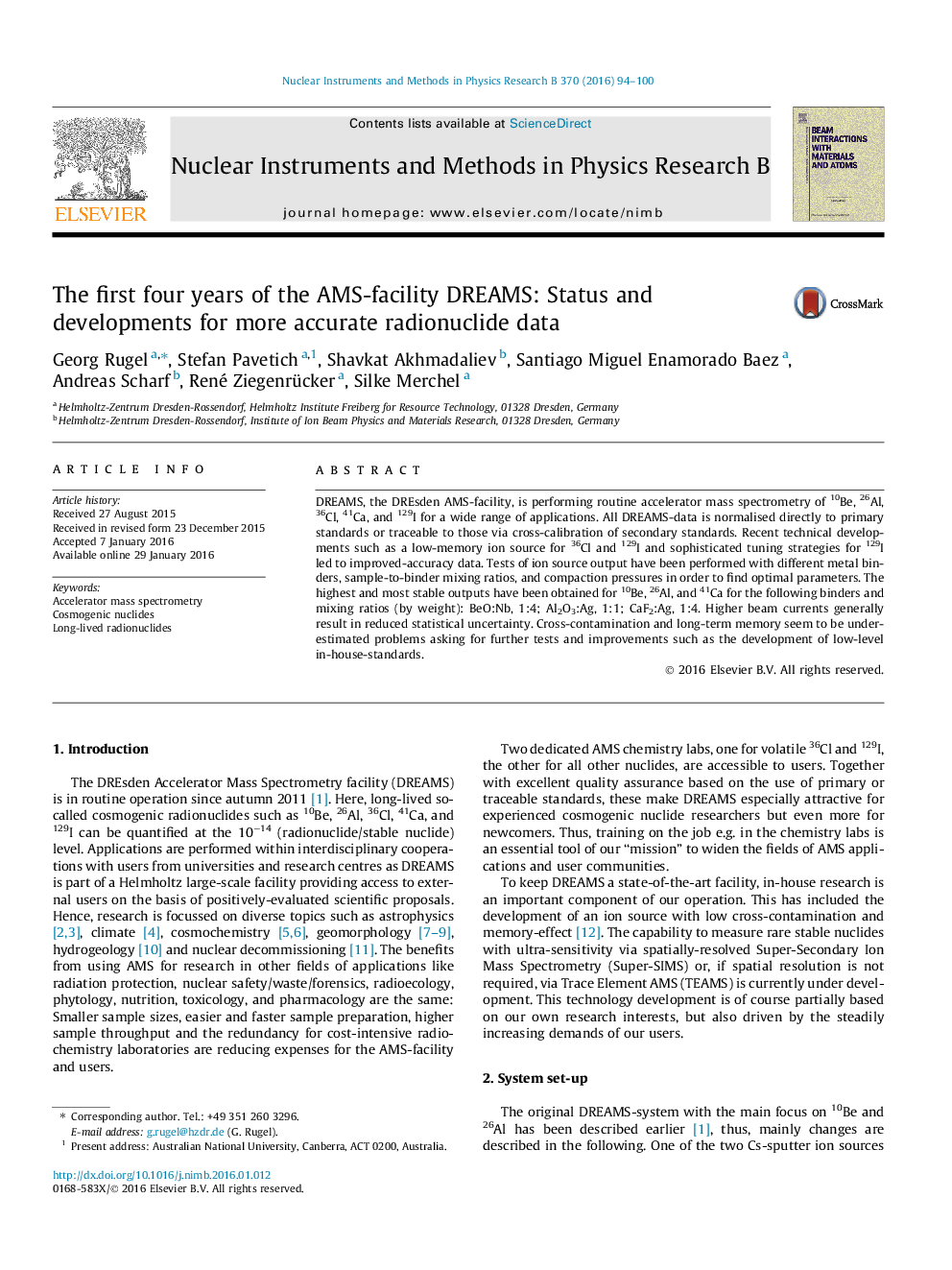| Article ID | Journal | Published Year | Pages | File Type |
|---|---|---|---|---|
| 1681767 | Nuclear Instruments and Methods in Physics Research Section B: Beam Interactions with Materials and Atoms | 2016 | 7 Pages |
•DREAMS is performing routine AMS of 10Be, 26Al, 36Cl, 41Ca, and 129I.•Data is normalised directly to primary standards or traceable to those.•Improved accuracy due to low-memory ion source and new tuning strategy for 129I.•Smaller statistical uncertainty due to optimised pressure, metals and mixing ratios.•Cross-contamination and long-term memory generally underestimated problem.
DREAMS, the DREsden AMS-facility, is performing routine accelerator mass spectrometry of 10Be, 26Al, 36Cl, 41Ca, and 129I for a wide range of applications. All DREAMS-data is normalised directly to primary standards or traceable to those via cross-calibration of secondary standards. Recent technical developments such as a low-memory ion source for 36Cl and 129I and sophisticated tuning strategies for 129I led to improved-accuracy data. Tests of ion source output have been performed with different metal binders, sample-to-binder mixing ratios, and compaction pressures in order to find optimal parameters. The highest and most stable outputs have been obtained for 10Be, 26Al, and 41Ca for the following binders and mixing ratios (by weight): BeO:Nb, 1:4; Al2O3:Ag, 1:1; CaF2:Ag, 1:4. Higher beam currents generally result in reduced statistical uncertainty. Cross-contamination and long-term memory seem to be underestimated problems asking for further tests and improvements such as the development of low-level in-house-standards.
